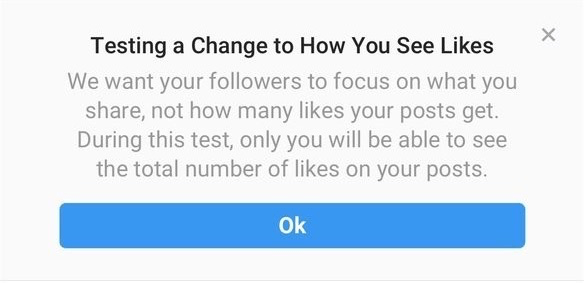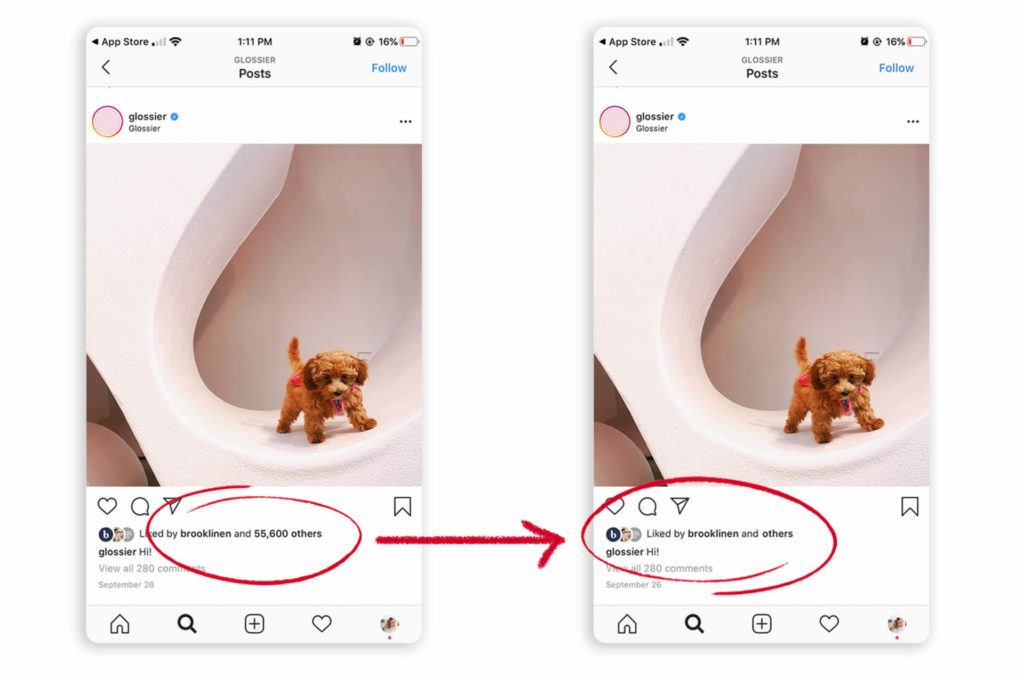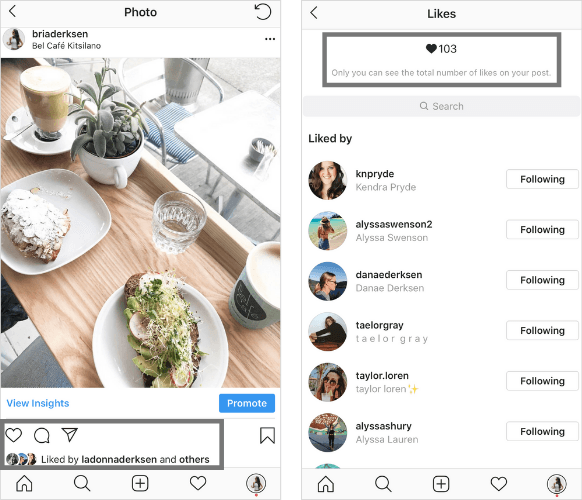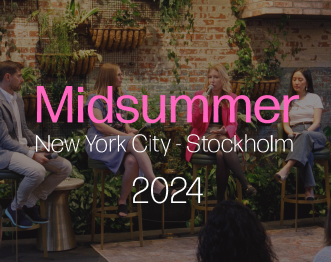Life After Likes: What Instagram Hiding Likes Means for Your Brand
What does a world without Instagram ‘Likes’ look like? Will hiding the likes affect brand engagement? We’re all about to find out.
Instagram recently started rolling out tests to hide like counts for select U.S. accounts. While this test has already been running for months in numerous other countries — Australia, Brazil, Canada, Ireland, Italy, Japan and New Zealand — it’s introduction to American users has been met with mixed reactions.
Does hiding likes affect engagement? Will this ‘kill’ influencer marketing? What does this mean for my brand’s social media strategy? If my post gets a million likes but no one can see it, should I even keep posting at all?
Let’s breakdown everything you need to know about why Instagram is going down this path, what impact it could have for your brand and the best ways to adjust your strategy going forward.
Why is Instagram Hiding Likes?
As Instagram states in their app notification for users who are part of the test, “We want your followers to focus on what you share, not how many likes your posts get.”

There has certainly not been a lack of research or think pieces on the various ways social media has been bad for us. Study after study has shown that while these platforms were meant to bring us together, what they’ve actually done is negatively impacted our mental health — sparking feelings of anxiety, depression, low self-esteem, loneliness and isolation in many.
Facebook (Instagram’s parent company) has even acknowledged as much in posts on their site, saying:
We want Facebook to be a place for meaningful interactions with your friends and family — enhancing your relationships offline, not detracting from them. After all, that’s what Facebook has always been about. This is important as we know that a person’s health and happiness relies heavily on the strength of their relationships.
Hiding likes is a step being taken by Instagram (and Facebook) to improve the quality and safety of people’s time on their platform(s). As the Head of Instagram, Adam Mosseri, said, “The idea is to try and depressurize Instagram, make it less of a competition, give people more space to focus on connecting with people that they love, things that inspire them.”
WATCH: Instagram CEO Adam Mosseri announces that the platform will start hiding likes for US audiences starting next week. It’s the latest step in Instagram’s quest to become the safest place on the internet. https://t.co/BGkMG57rdk #WIRED25 pic.twitter.com/WNTyAPVhaD
— WIRED (@WIRED) November 9, 2019
Instagram is hoping that with less pressure and scrutiny on likes, will come a higher volume of posts from users — and less posts being deleted as a result of low like counts.
How Will Hidden Likes Work?
While like counts won’t be completely gone, they will be, well, hidden. Therefore, if you post a photo, your followers won’t be able to see the number of likes any longer, but you will within your own private view.
In the example below, you can see the change in the public view of posts. Where there used to be a like count, there will now only be the name of one person who liked that image and “others” displayed.
The account that posted the image will be allowed to see both their total like count and all the users who liked the image within the type of private view showcased below. Users can get to this view by clicking the “others” link on their posts, similarly to how you’d click the like count link to view all the people who liked your photo in the past.
How Will Hidden Instagram Likes Affect Your Influencer & Social Brand Strategy?
‘Likes’ have long been one of the most basic ways for social media influencers to demonstrate their ability to garner attention and engage audiences. With the removal of public like counts, it will undoubtedly make it harder for brands to find influencers and track their overall engagement rates without the right technology.
And although most influencer marketing platforms will still be able to access the data of creator and verified Instagram accounts, influencer agencies and brands running manual influencer programs will need to develop direct relationships with influencers in order to gain access to this, now private, information.
It will also likely be more challenging for new influencers to gain traction with social audiences, and it’s safe to anticipate that the average number of likes on influencers’ posts will diminish a bit once likes are hidden for all users. In fact, a study by HypeAuditor of over 154,000 Instagram influencers found that most influencers lost anywhere between 3-15 percent of their likes in countries where likes were hidden.
This points to an underlying concern a number of people have brought to light: with this change, Instagram will be effectively cutting into influencer spend. Or, as the Times agency’s Jason Peterson said, “This is only Facebook’s way of owning the influence.”
HeyInfluencers founder Gretta van Riel, has been outspoken about what she sees as Instagram’s motivations and the implications this change could have on the influencer industry:
Ultimately, brands spend the advertising $ on Instagram. This change is going to make it much harder for many brands to judge an influencer’s effectiveness (which engagement is an indicator of) or know when an account has bought fake followers etc.
⠀⠀⠀⠀⠀⠀⠀⠀⠀⠀
This will make it harder for brands to truly scale their influencer marketing efforts (without the use of tools with integrated social analytics, hi @heyinfluencers ♥️) leading the way for a further investment into paid.
However, most marketers have understood for years now that likes are only one component of engagement and the most passive one at that. Other social metrics like comments, shares, saves, @mentions and click-throughs are all much better indicators of engagement and enthusiasm.
For this reason, many brands have already begun moving away from like counts as a success metric for their social and influencers strategies.
The removal of like counts could server to help correct key areas where the social influencer ecosystem has gone off course and assist in pushing the industry further towards the more authentic experiences and relationships nano and organic influencers cultivate.
As FamePick’s Mark Zuvella said in a recent Guardian article,“It’s a moment of reckoning for the [influencer] industry. People faking it will fade away, and people who are real will stand out.”
Social Media Link CEO, Susan Frech, reaffirms this renewed importance around authenticity, saying, “The future of Instagram will be about authentic influence rather than bloated credit.”
Instagram Strategies Going Forward
So, what does a life after Instagram like counts look like for your brand? Here are some suggested adjustments you can make to your Instagram strategy to be successful in a post-like world:
- Build loyalty over likes – An important cue brands and influencers should take from this Instagram change is the need to shift from a strategy of like-getting and follower building towards one of community and relationship building. Prioritize content and messages that are not only relevant to your audiences but also sparks more meaningful conversations and connections.
- Create more authentic content experiences – With the constant pressure to get likes alleviated, brands and influencers can now focus on the quality, transparency and authenticity of the content they share. Studies show that people prefer and are more influenced by authentic, user-generated content than brand or influencer-created content, so give people more of the real and relatable content experiences they want.
- Diversify your content mix – It’s important to note that the ephemeral content Instagram is heavily focused on, Instagram Stories, has never shown like counts, yet has continually grown in popularity with users. As like counts go away, brands will have the opportunity to focus on providing a broader mix of content experiences for Instagram audiences via Stories and IGTV.
- Focus on organic influencers – A great way to build loyalty while also creating more authentic and diverse experiences for consumers is to begin shifting your focus away from traditional influencers toward organic influencers — your passionate advocates who are already organically creating content online about your brand. Building a community of organic influencers can help you deepen 1:1 customer relationships while simultaneously scaling your asset library with unique, high-performing visuals.
- Ditch vanity metrics – If you haven’t already, now’s the perfect time to stop tracking vanity metrics — such as likes and follower counts — and start setting more meaningful goals around actions that indicate engagement, enthusiasm and intent to purchase. As we mentioned before, these KPIs can include the tracking of metrics like @mentions, comments, shares, saves, clicks and conversions. You can better impact the performance of these metrics by combining your more authentic and diverse content with clearer calls-to-action for your audiences.
So, will hiding likes affect engagement? For too long, brands and influencers prioritized getting likes over building meaningful relationships and sharing authentic content. Here’s hoping this Instagram change will make the platform a healthier and safer place for users while giving brands an opportunity to create more real and meaningful content connections with consumers.






